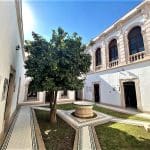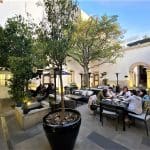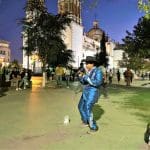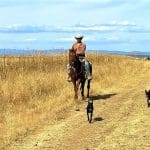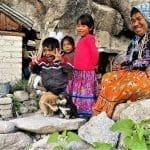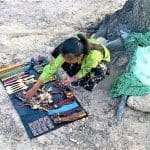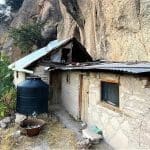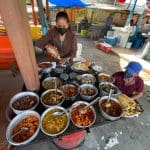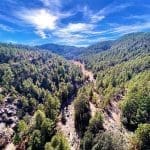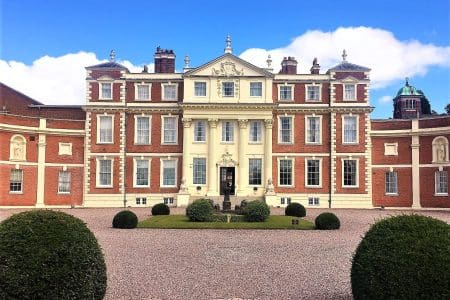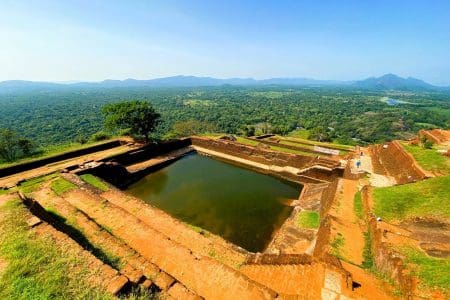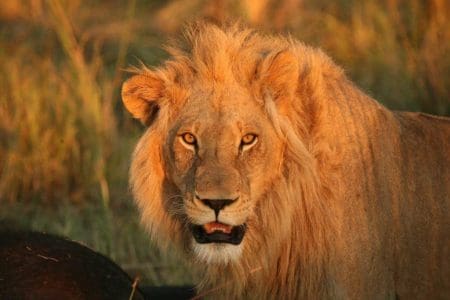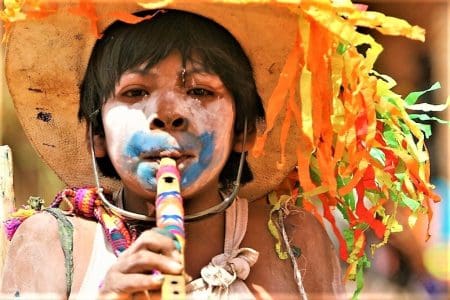Mark Bibby Jackson visits the state of Chihuahua Mexico in search of dogs instead he falls in love with the amazing Copper Canyon, goes on a spectacular train ride and meets a religious community at peace with itself.
There is something about travelling by train that gets the juices flowing. It is the rhythm, the pace, the sense of freedom when compared with other cooped up modes of transport. It is the latter that I sense most of all as I take the Chepe Express from the Copper Canyon in Chihuahua down towards the Pacific Coast. As the vegetation slowly transforms from rock to cactus I am able to reflect upon my brief stay in this wonderful state in Mexico.
Pancho Villa and Chihuahua Mexico
Chihuahua means a ‘dry and sandy place’ and it is easy to realise why as we arrive in the state capital, also called Chihuahua. Founded in 1709, the capital has an interesting historical centre dominated by the large metropolitan cathedral which contains apparently the fourth largest organ in the world.
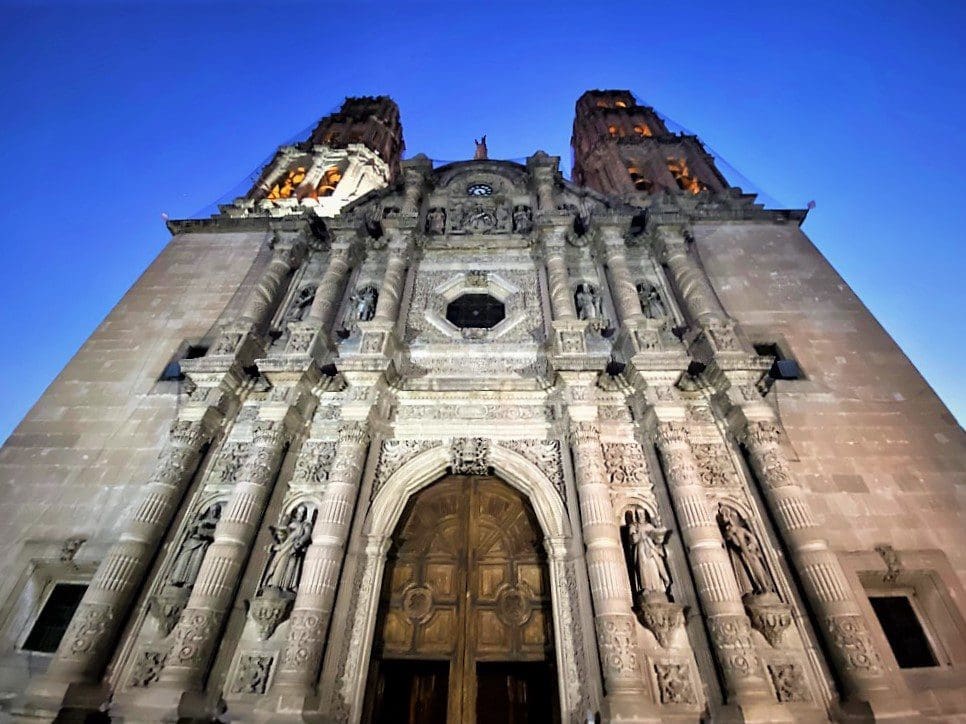
The city was built out of profits derived from cattle farming and mining in the area. Although as we arrive the main activity appears to be shoe shining. The streets around the cathedral were converted into a walking street around a decade ago, which has created a pleasant stroll to the Governor’s Palace, on which we pass a wonderful mural of Mexican artist Diego Riviera.
Inside the Palace is an equally impressive mural by Aaron Pina Mora that tells the story of the region starting from the arrival of the Spanish in 1536. One of the panels represents Benito Juarez, the only 100% indigenous Mexican president pictured between Lincoln and Bolivar, although the mural of a naked soldier is more striking. The man who is supposed to be Pascual Orozco, according to our excellent guide Pedro, represents honesty. Elsewhere is a memorial for Miguel Hidalgo the father of the National Independence Party of the country who was executed on 30 July, 1811.
Across the road is Casa Chihuahua, the old post office dating back to 1910. Now it is used to house a museum as well as art exhibitions. In its basement is the reconstruction of the small jail where Miguel Hidalgo was incarcerated.
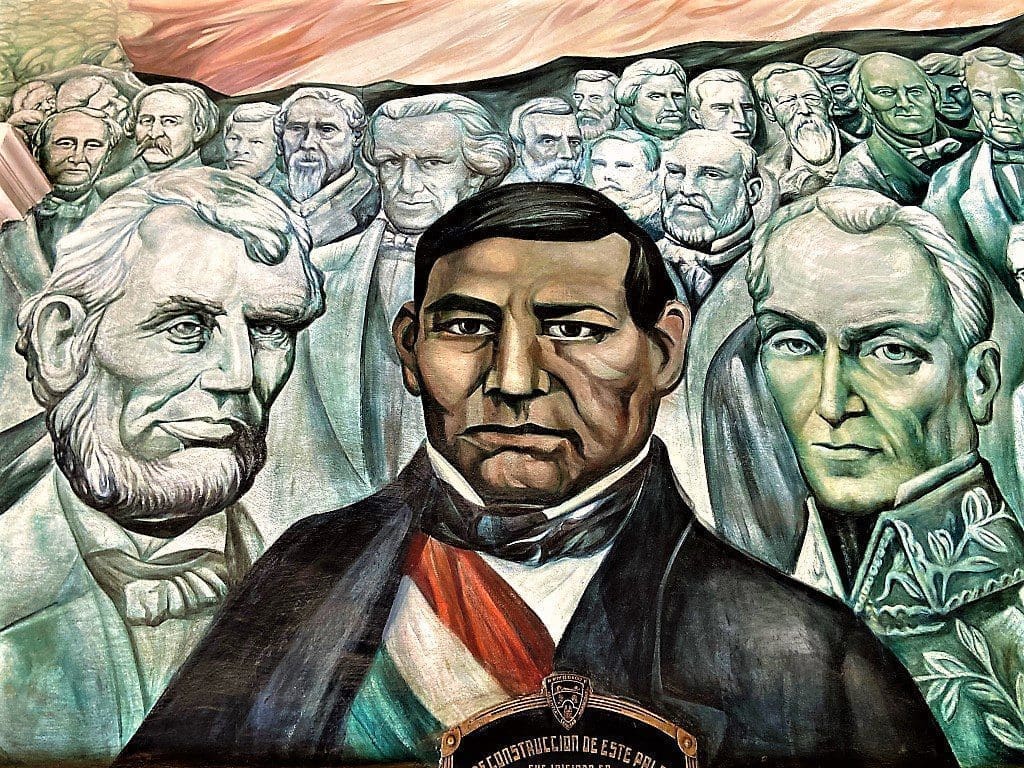
Away from the centre, possibly the most interesting attraction in the city of Chihuahua is the Pancho Villa Museum, housed in the revolutionary Mexican’s former home. This includes the car in which he was assassinated in 1923. You can still make out the bullet holes.
Pleasant by day, the city transforms at night. After checking into our hotel, the amazing Central Hotel Boutique opposite the cathedral, where I was given a room overlooking the central courtyard, I went out for a stroll as the sun began to set. The square had become alive with people dancing and cowboys singing. I don’t think I have ever visited a place with so much music. It really had a quite special feel to it.
After my stroll I was treated to an amazing meal back at the Central created by chef Karla Gonzalez Ruiz which was contemporary yet used food typical of the region. It certainly was a gastromically delight I did not expect of Chihuahua food.
Meeting the Mennonites
The following day we drove through the western part of the Chihuahua dessert into the prairies.
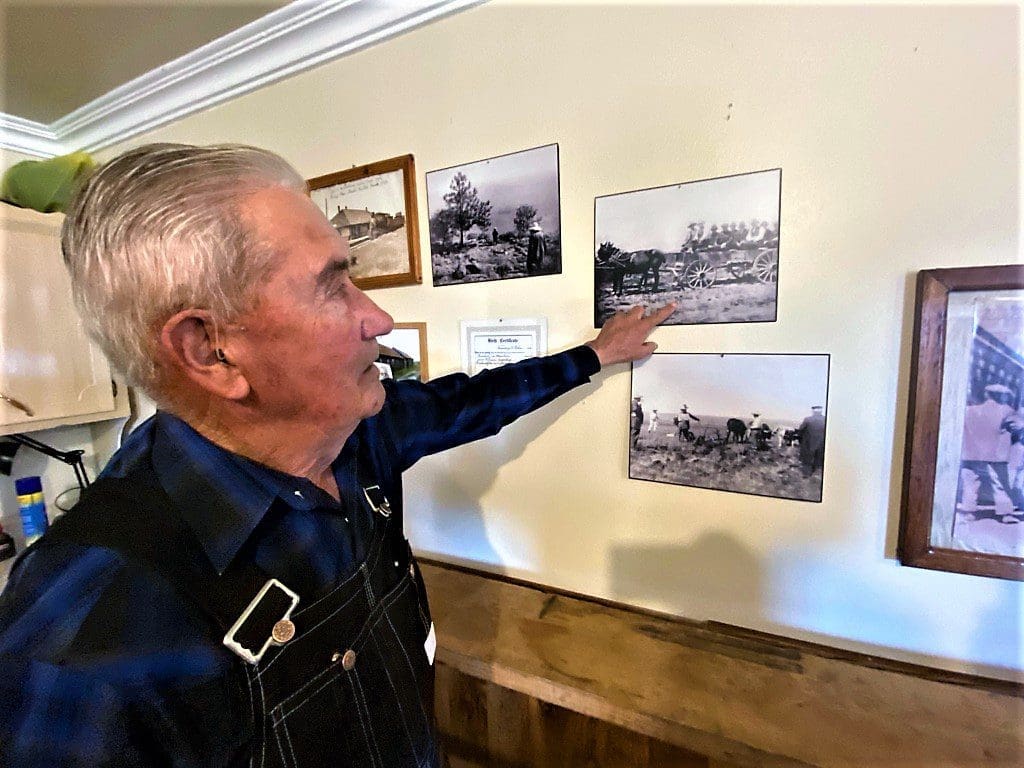
It was here that the Mennonites settled in 1922. Arriving on a Sunday morning, we are shown around a farm just outside Ciudad Cuauhtémoc by Abraham Peters. There are about 80,000 Mennonites based in Chihuahua state. The religious order was founded in the 16th Century in the Netherlands. Since then the people have moved around the world, exiled from places predominantly due to their refusal to take military service.
Born in 1942, Abraham shows us pictures of his family and ancestors while explaining the simple existence the order lives. His is a small farm with a few cows. He grows oats and beans, selling the former and eating the latter. With a great sense of humour he explains how he drinks tequila to protect himself from Covid before asking us to say hello to Queen Elizabeth when we return to the UK.
Nearby Carlos Venzor, 58, opened a museum in 2017 to exhibit the farm equipment that he has collected over the years. His aim is to ensure younger generations can remember how people used to live and work. He says that his passion is not shared by other farmers, and to date very few tourists come here. This is a pity as his collection is most interesting, and continues into a neighbouring barn where household equipment, including a magnificent collection of Singer sewing machines is stored.
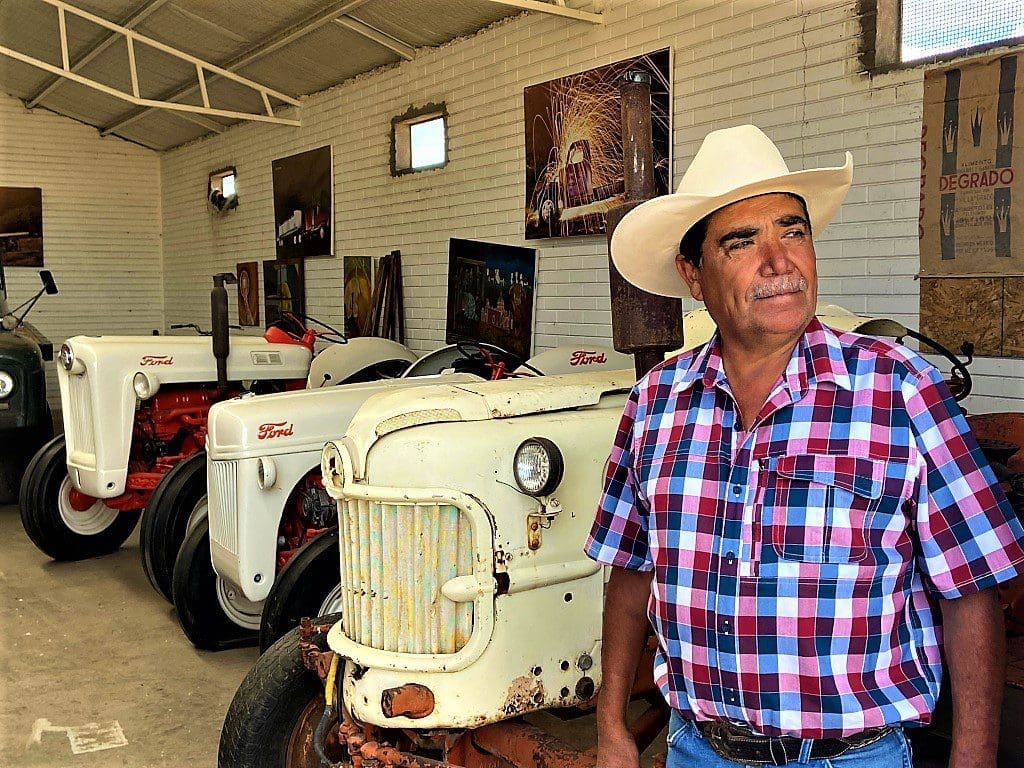
Chihuahua Mexico Photo Gallery
Valley of the Monks
Our day concludes by visiting the Valley of the Monks, a wonderful rock formation just outside the town of Creel. The rocks derive their name from their shape, one in particular looks like a bishop in a chess set.
The formations are quite spectacular, especially as the sun is beginning to set with the dimming light intensifying the beautiful mix of colours – green, red and brown. There is a wonderful sense of tranquility which lures you into wishing to stay longer.
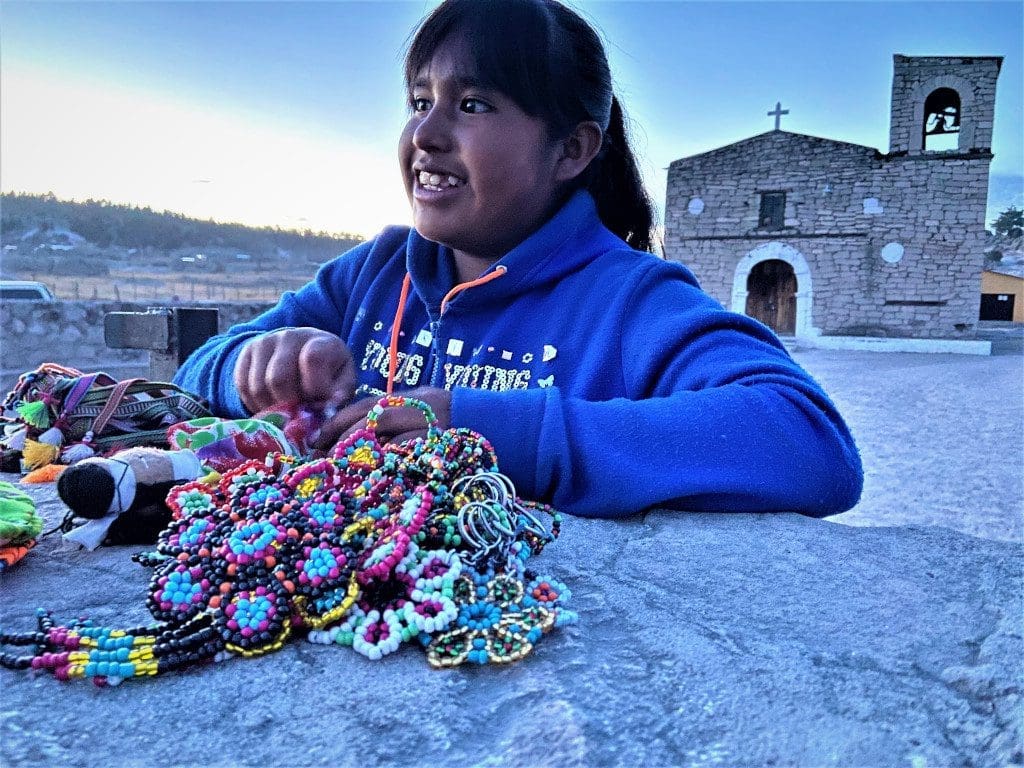
The local people called the Rarámuri, are noted for their running, but as the sun sets we stand around chatting with them. One girl, Angelica, 13, explains how she wishes to become a teacher when she grows up, while casually trying to sell us some bracelets.
Copper Canyon
The following day we drive through pine forests towards the Copper Canyon (Barrancas del Cobre). As we are early, we stop off along the way.
While others in my group walk to a small hut where a family lives, I stroll through the trees; where there is a refreshing smell of pine. Here I reflect upon the intrusive nature of our intervention. Are we just gawping at the locals pointing our cameras in their faces? Is there any interaction here? Surely, travelling should be more of a two-way process. The litter left in the forests reinforces my sense that I am doing no good being here. So, I walk further off into the trees and try to find my own solitude.
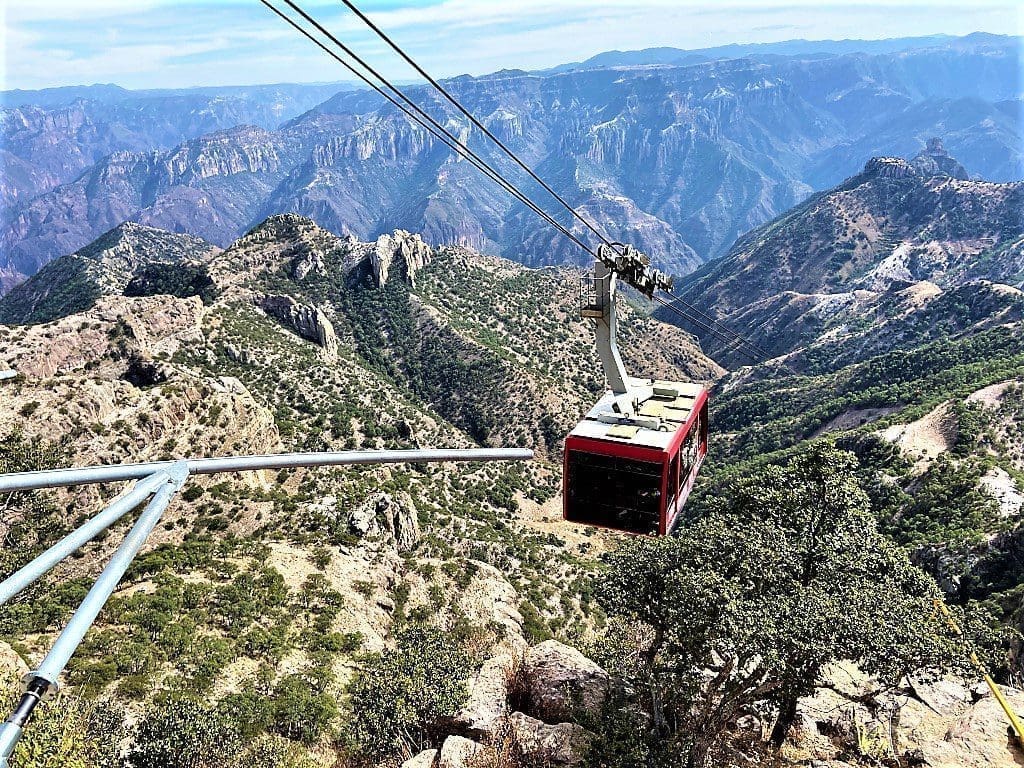
After this unsettling interlude, we continue along the road to the Copper Canyon Adventure Park. At 2,220 metres above sea level, the canyon is larger than the Grand Canyon.
Turkey vultures and red tail hawks fly in the enormous void in front of me. As a few daring members of our group prepare to descend on the zipline into the canyon, I take the cable car into its heart. I have never been one for adrenaline rushes. For me adventure travel is about the places you visit and the people you encounter there rather than some chemical rush you can get anywhere.
However, I admit to being impressed by the zip rider which is just over a mile and a half long and reaches a speed of 62mph. Apparently it is the longest in the world. In contrast our cable car travels 1.86 miles at a much more sedentary pace; it is the third longest in the world. There is also a seven-zip line circuit which includes two suspension bridges you can traverse.
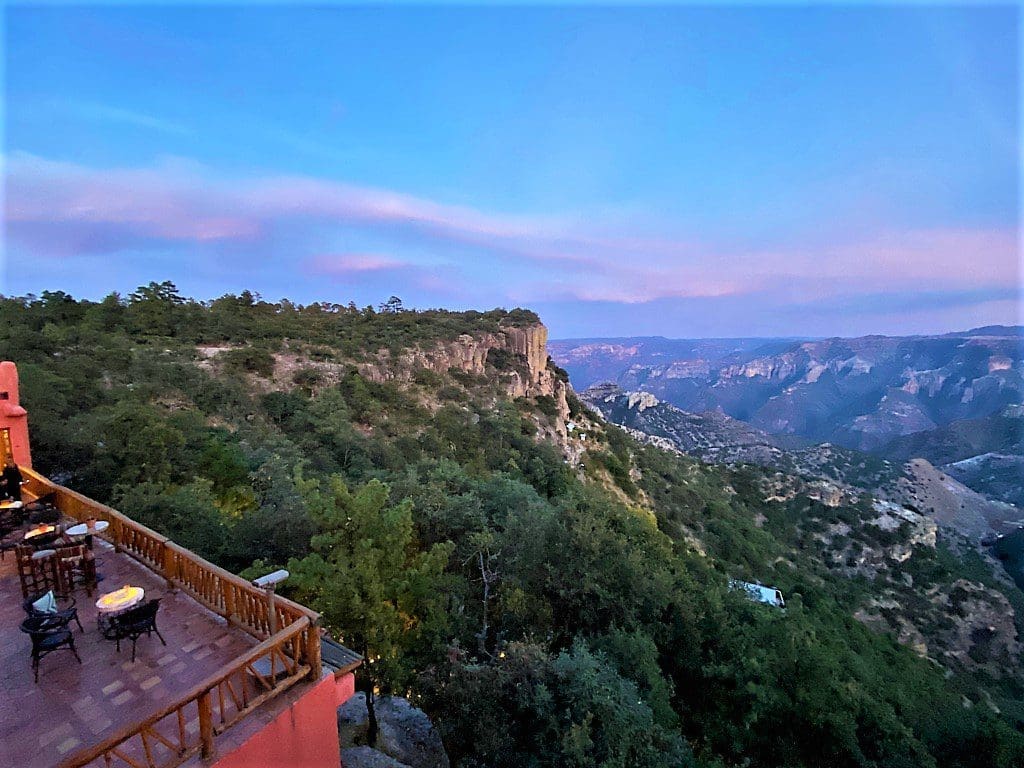
Standing at a point where three canyons converge, the sheer beauty of the Copper Canyon unfolds. The colours of the rocks are quite amazing. I settle here content for a few moments to truly appreciate the views and soak up the atmosphere.
The Copper Canyon Adventure Park has been open for a dozen years, and according to Pedro it provides much needed income to the local people.
Walking with the Rarámuri
After our visit, we head to the El Mirador Grand Hotel where we will be staying the night. This really does have the most spectacular view of the Copper Canyon, which makes a stay here an absolute must on any trip to the region.
Before dinner we go on a stroll along the edge of the canyon. Outside the hotel Maria is weaving some souvenirs for the tourists from pine needles. It takes her two hours to weave a can holder, although collecting the needles is a more lengthy process. Some days she earns money from selling her work to tourists, at other times she earns nothing, She has a couple of boys who are going to school.
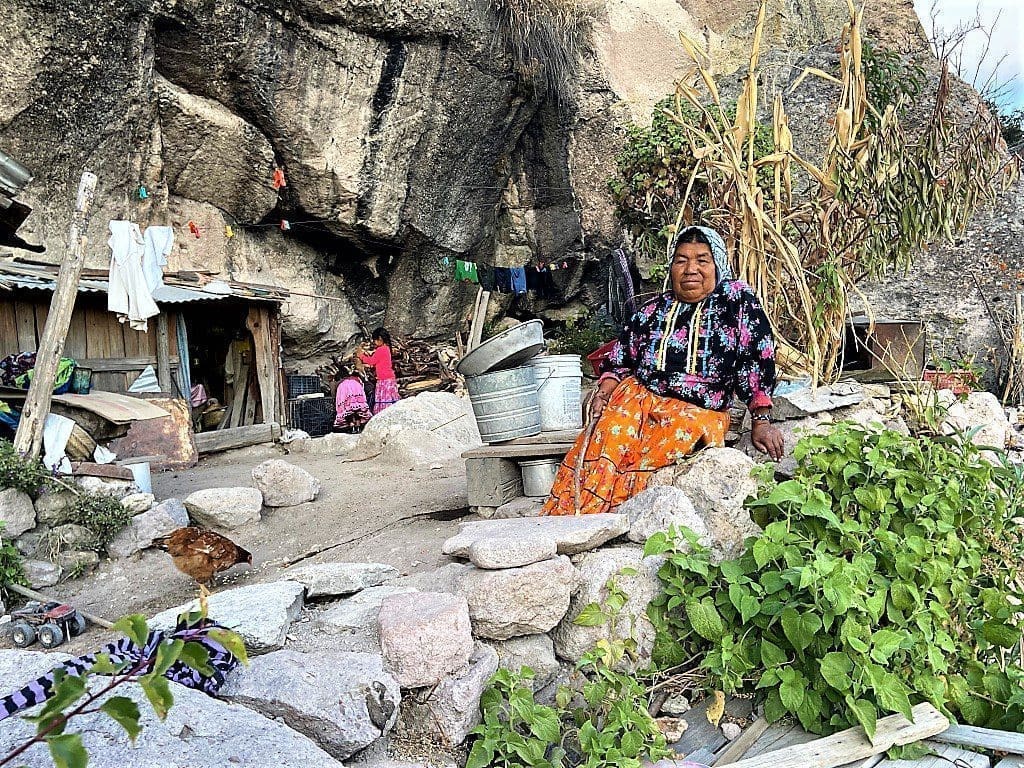
A little further on we stop by the side of the canyon to enjoy the most amazing views. Beside us Elena, 10, is being most particular in how she arranges her goods, like a young girl playing as a shopkeeper, although this is no game.
Earlier Pedro had explained that the regional authority has provided the locals with solar panels to provide electricity for the small huts as well as pipes to collect water. Later on we meet Maria again at her tiny smallholding next to her hut where she raises chickens and grows corn and vegetables. As we stop to chat and inevitably take photos, little Omar shrieks with joy as he sees an airplane in the distance, echoing the noise that it makes.
Our small circular walk around the canyon reminds me of trekking in Nepal, even down to the all-pervasive smell of burning wood, and the pack of dogs that follows us. Eventually, we return to the hotel for the most spectacular sunset followed by dinner in the hotel, surely the best (possibly ony) Copper Canyon retaurant. The sunset really was quite magical.
Copper Canyon Train
It is from nearby Divisadero station that we take the Copper Canyon train, called the Chepe Express, the following morning to the city of De Los Mochis. We are fortunate enough to be given access to the highly recommended viewing terrace at the rear of the train. Sitting on a stool I was able to take in the al fresco views on both sides of the train, as we start chugging our way through the rock formations and pine trees that have become so familiar by now.
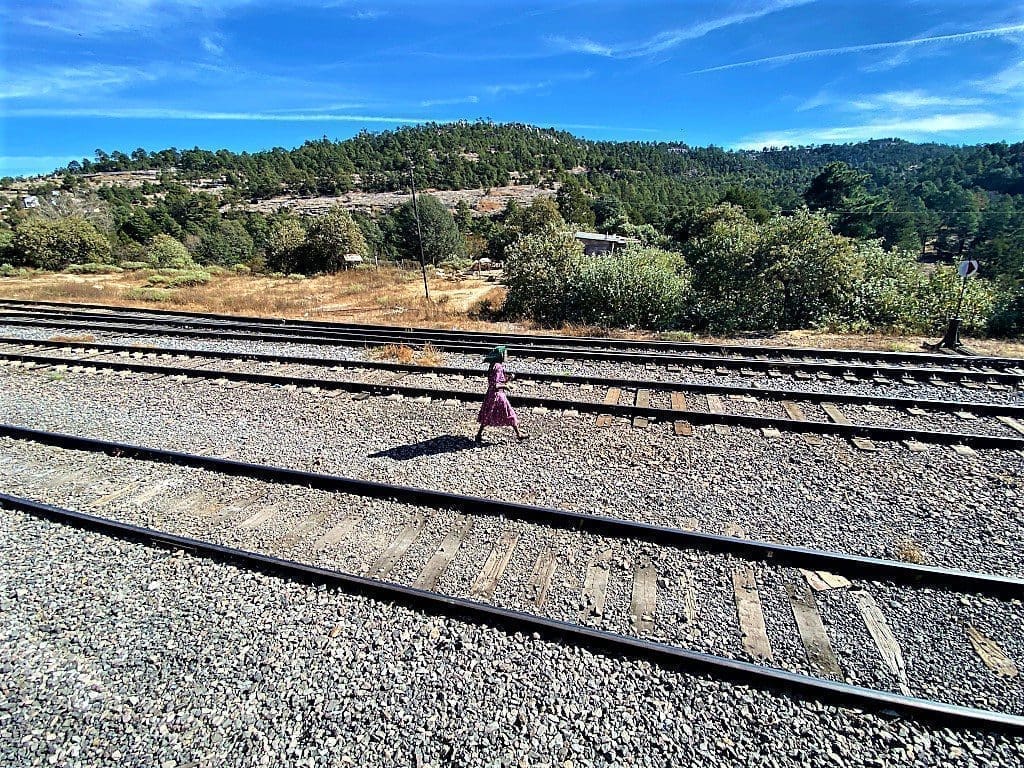
Women and children walk beside the train on the tracks offering us souvenirs to purchase. It has a feel of travelling by train in India some thirty years ago, only here no one is sitting on the roof and my fellow passengers are drinking cocktails not masala tea in the Terrace.
It reminds me just how much I love train journeys and travelling, a delight denied to us by Covid.
After a couple of hours we pass though the sierra and descend into the prairies. The weather is appreciably hotter, and the terrain has changed. Here farmers grow corn in the fields. Occasionally we stop for no apparent reason.
At one stage an enormous freight train passes us in the opposite direction, so we stop to let it pass. Then we follow the course of a river as a timelessness overwhelms us. Our train could easily be called manana.
Copper Canyon and Chepe Express Photo Gallery
After lunch the landscape has become totally arid, and the thermostat has ramped up a few notches. Now huge cactus trees dominate the terrain.
The journey allows me to reflect upon my short travel to Chihuahua. At times I have felt as if an intruder upon other people’s privacy. But I have learned from them and hopefully shared some of their experiences and history with you. It is the perennial tug of war between the good and bad that travel brings with it. Fortunately there was no ugly. The economic benefits are clear, especially around Copper Canyon, but there is an intrusiveness that I find distasteful.
I guess it all comes down to how you travel and why, more than where. And for me there is no better way to travel than by train. The Chepe Express chugs into De Los Mochis just as the sun is setting on my travels to Chihuahua Mexico. A most rewarding and reflective trip that just leaves me craving for more.
Things to Do in Chihuahua Mexico
For more inspiration on what to do in Chihuahua Mexico visit the Ah Chihuahua website.
